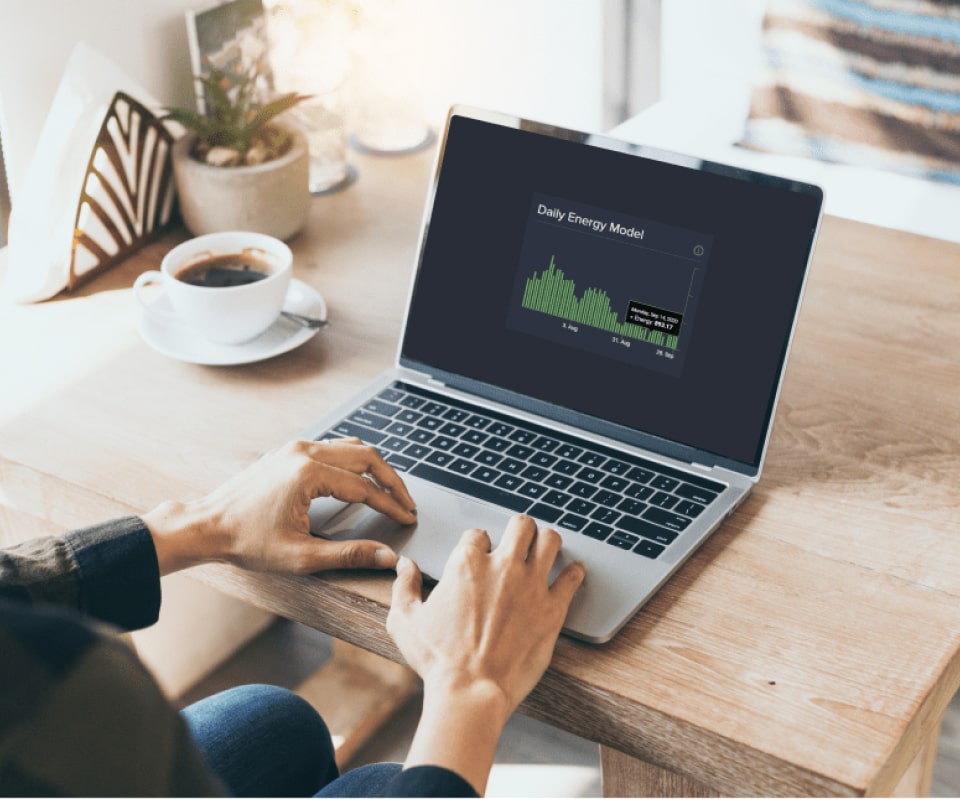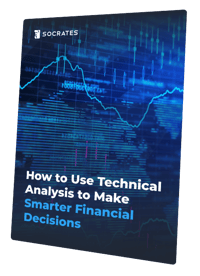Beginner's Guide to Applying Technical Analysis to Financial Markets



Technical analysis helps investors evaluate financial assets by studying historical price changes and trading volumes. This data enables traders to spot patterns and identify potential future movements. Unlike fundamental analysis, which focuses on a company’s financial details, technical analysis zeroes in on price trends, working under the idea that everything traders need to know is already reflected in the price.
Whether used by day traders or long-term investors, technical analysis provides a versatile set of tools that can adapt to different trading styles and objectives. This guide covers the essentials for beginners: key concepts, popular indicators, chart types, and practical steps to get started.
Results
By using the Timing Arrays to research the market’s cyclical activity, we were able to identify the week of July 17th as a potential turning point — and a few days within that week where cyclical activity seemed to be most notable.
After this analysis, we turned our attention to studying the price action of the underlying market.

When Should You Use Technical Analysis?
Technical analysis is a guide for understanding financial market behavior by highlighting patterns and trends within price movements. By focusing on historical data, traders can identify signals that suggest whether an asset is likely to rise, fall, or remain stable. Technical analysis is particularly effective for recognizing entry and exit points, timing trades with precision, and managing risk — all of which are vital in short-term and long-term trading strategies.
Using technical analysis, investors can:
- Assess potential volatility
- Spot and identify the strength of emerging trends
- Make data-backed decisions without relying on external information about an asset
Technical analysis can be applied to all assets including stocks, commodities, forex, bonds, ETFs, and cryptocurrencies. Regardless of the market, analysis is most effective when sufficient long-term historical data is available. The more data available, the more robust the research can be.
Core Principles of Technical Analysis
Technical analysis is built on a few guiding principles:
- Trends Matter: Prices tend to move in upward, downward, or sideways trends, which helps traders plan their moves.
- Prices Tell All: The current price incorporates all known information about the asset, including whether people feel optimistic, cautious, or uncertain about an asset. As such, technical analysis focuses on tracking prices rather than looking up company news or economic data.
- History Repeats: Repeating price patterns emerge from investor behavior, providing clues for recognizing future trends.

Limitations to Technical Analysis
Technical analysis, while powerful, relies on historical data that may not account for sudden events that disrupt historical trends such as unexpected economic or political events. For a fuller picture, many investors combine technical with fundamental analysis.
Technical Analysis vs. Fundamental Analysis
Fundamental Analysis |
Technical Analysis |
|
|
Focus |
Evaluates a company’s intrinsic value based on financial health, industry trends, and macroeconomic conditions |
Examines historical price and volume data to identify trends and patterns |
|
Key Tools |
Financial statements, economic indicators, industry analysis |
Price charts, technical indicators (e.g., moving averages, RSI) |
|
Assumptions |
Market price may not reflect true value, especially in the short term |
Historical patterns repeat. An asset’s price already reflects all available information |
How to Start Applying Technical Analysis to Financial Markets
Technical analysts use charts to find patterns and key price levels in the market. They also use indicators, simple calculations that highlight market conditions, and signals, which suggest when to buy or sell.
By studying these tools, technical analysts aim to forecast price movements and make informed trading decisions. Here are seven steps to getting started with technical analysis:
1. Learn Basic Trading Signals
Trading signals are clues that reveal where the market might be headed. Mastering these basic signals provides a foundation for understanding price movements and trends.- Price Trends: Observing whether prices are moving up, down, or sideways helps traders align their strategies with the market’s overall direction. Trends are a core focus in technical analysis and can reveal prevailing market sentiment.
- Market Cycles: Markets tend to move through four recurring phases: accumulation, markup, distribution, and markdown. Recognizing these cycles enables traders to anticipate potential shifts, helping them choose opportune moments to buy or sell.
- Volume and Volatility: Volume (the amount traded) and volatility (price fluctuation) offer insights into market strength and potential risks. High volume often confirms a trend's strength, while high volatility can indicate potential trend reversals.
Example: Imagine you’re analyzing stocks for a company called TechCo. You start by examining price trends over the past year. A steady upward trend over the past year suggests rising prices and market optimism, indicating TechCo may be in a bullish phase worth further exploration.
2. Explore Key Chart Types
Technical analysts rely on charts to visualize price movements over time. Here’s a breakdown of the main chart types and how they’re used:- Line Charts: Simple yet effective, line charts plot closing prices over a set period, showing the overall direction of an asset. They’re often ideal for identifying long-term trends without the distractions of daily fluctuations.
- Bar Charts: Offer greater detail by displaying the opening, closing, high, and low prices for each period, enabling traders to see intraday price ranges. Bar charts are often useful for understanding volatility and price ranges within each time interval.
- Candlestick Charts: A widely used chart type in technical analysis, candlestick charts illustrate each period’s open, close, high, and low prices with color-coded “candles.” Candlestick charts make it easy to spot bullish or bearish trends, as well as potential reversals.
In technical analysis, the timeframe you choose — whether it’s one minute, one hour, one day, or one month — significantly impacts how you interpret price movements.
Shorter timeframes are often used by day traders looking for quick price changes, while longer timeframes provide a broader view, helping long-term investors spot overarching trends. It’s important to select a timeframe that aligns with your trading strategy and investment goals.
Example: For a closer look at TechCo’s price behavior, we switch from a line chart to a candlestick chart. Candlesticks show daily opening, closing, high, and low prices, which makes it easier to see day-to-day price sentiment.
Recent candlesticks for TechCo show larger “bullish” candles, indicating strong buying activity and reinforcing our view that the stock is in an uptrend.
3. Understand Support and Resistance Levels
Support and resistance levels reflect psychological factors in the market, as buyers and sellers tend to enter or exit positions at these price points. Recognizing them helps traders anticipate areas where prices might reverse or pause, allowing for more strategic entry and exit points.- Support Levels: Support is the price level where demand is strong enough to stop a decline, creating a “floor” that prevents further price drops. Support levels often signal potential buy points as prices tend to bounce upward.
- Resistance Levels: Resistance is the price level where selling pressure prevents further upward movement, creating a “ceiling.” Prices may reverse down from this level, marking it as a potential sell point.
Example: For a closer look at TechCo’s price behavior, we switch from a line chart to a candlestick chart. Candlesticks show daily opening, closing, high, and low prices, which makes it easier to see day-to-day price sentiment.
Recent candlesticks for TechCo show larger “bullish” candles, indicating strong buying activity and reinforcing our view that the stock is in an uptrend.
4. Explore Key Technical Indicators
Technical analysis makes use of multiple indicators. Indicators have distinct purposes, such as to gauge momentum, trend direction, or identify reversals. The following indicators are commonly used and are an excellent starting point for research. - Moving Averages (MA): Moving averages smooth price data over specific periods to reveal trends. Simple Moving Averages (SMA) and Exponential Moving Averages (EMA) are common choices for identifying trend direction and possible entry/exit points.
- Relative Strength Index (RSI): RSI is a momentum indicator that shows when an asset is overbought or oversold, signaling potential reversals in trend strength.
As indicators provide insights on one aspect, they cannot provide a complete picture of market behavior. Instead, indicators should be used together to develop a fuller market understanding. For example, a moving average showing an uptrend, paired with an RSI indicating that an asset isn’t overbought, may confirm a stronger buy signal.
Example: Now, we’ll add a couple of indicators to gain more insight into TechCo’s trend.
We overlay a 50-day simple moving average (SMA) on the chart. Currently, TechCo’s price is above the 50-day SMA, a positive signal indicating an uptrend. Checking the relative strength index (RSI), we see a reading of 65. This level suggests that TechCo is not yet overbought, meaning the uptrend may still have momentum.
Together, these indicators suggest that TechCo’s trend is strong, backed by favorable momentum. This can reinforce confidence in a potential buy decision.
How to Use Technical Analysis to Make Smarter Financial Decisions
This guide shares practical tips on applying technical analysis to financial market data. From moving averages to stochastic oscillators, we explore how 7 different indicators can be used to reveal market trends.

5. Learn Essential Chart Patterns
Chart patterns are recognizable formations in price data that reveal something about market behavior. While there are many types of chart patterns, beginners often start with two widely used categories: reversal patterns, which suggest a trend might change direction, and continuation patterns, which indicate that a trend is likely to keep going.
Examples include:
- Head and Shoulders: A reversal pattern often signals a possible change from an uptrend to a downtrend.
- Double Top and Double Bottom: Patterns where price peaks or dips twice at similar levels, hinting at a potential trend reversal.
- Triangles: Patterns that can indicate continuation, where price may break out in the direction of the current trend.
Example: Now, let’s look for any recognizable chart patterns that can provide additional clues.
For TechCo, we spot a “double bottom” pattern forming around the $100 support level. A double bottom often signals a reversal from a downtrend to an uptrend, strengthening our belief that TechCo’s upward trend could continue.
6. Choose the Right Technical Analysis Software

Once familiar with charts, indicators, and patterns, choose charting software that enables robust technical analysis. Your software should provide access to market data, a range of indicators, and multiple chart types.
The Socrates Platform, for instance, offers a suite of technical analysis tools, including indicators and charting. Socrates’ advanced computer models also analyze global financial markets to identify patterns, trends, and recurring cycles.
7. Practice and Expand
Getting started with technical analysis can seem daunting, but mastering the fundamentals is a one-time investment with lifelong rewards. Once you learn the basics, these core lessons become second nature, forming a strong foundation for more advanced analysis.
As you build your skills, set specific goals for what you want to achieve with technical analysis. For example, you might focus on learning swing trading patterns or identifying long-term trends for buy-and-hold investments. A clear focus prevents information overload and helps you apply your skills more strategically.
As you practice, aim to build on your knowledge gradually. The more you study and apply new techniques, the more confident you’ll become — and the fewer mistakes you’ll make. Technical analysis is a skill that grows with time, so keep exploring and refining your approach.
Putting Technical Analysis into Practice
For those looking to deepen their technical analysis skills, the Socrates Platform offers a comprehensive market research solution powered by advanced proprietary models. These models apply technical analysis methodologies to identify significant trends, patterns, and potential investment opportunities across global markets.
With sophisticated data analysis and computer-generated insights, Socrates simplifies complex market information into actionable signals, making it accessible even for those new to technical analysis.
Our platform offers plans catering to all investors, irrespective of experience level. Explore our membership plans to find the one that best aligns with your investment goals.
Wondering how Socrates can help you navigate the financial market?
Technical Analysis Frequently Asked Questions
1. Is technical analysis suitable for beginners?
1. Is technical analysis suitable for beginners?
Yes, technical analysis is a good choice for beginners. Core concepts like trends and basic indicators are easy to understand, even without a financial background.
2. What are the most important indicators to start with?
2. What are the most important indicators to start with?
Beginners should start with a few essential indicators: Moving Averages (SMA) for spotting trends, Relative Strength Index (RSI) for gauging momentum, and Volume to confirm trend strength. These basics provide a solid foundation for understanding price movements.
3. How reliable are technical analysis signals?
3. How reliable are technical analysis signals?
Technical analysis signals can be helpful but are not guaranteed predictions. These signals indicate probabilities based on historical price data rather than certainties. Reliability often increases when multiple signals align, providing stronger confirmation.
4. What if an asset behaves differently than the indicators suggest?
4. What if an asset behaves differently than the indicators suggest?
Remember, indicators suggest probabilities, not certainties. Combining multiple indicators can strengthen your analysis.
5. How much time does it take to learn technical analysis?
5. How much time does it take to learn technical analysis?
Learning the basics of technical analysis can take a few weeks of practice, while mastering advanced techniques may take several months or more.
6. Can I use technical analysis on any type of asset?
6. Can I use technical analysis on any type of asset?
Yes, technical analysis can be used on any asset with historical price data, including stocks, forex, commodities, bonds, ETFs, and cryptocurrencies.
7. Is technical analysis only useful for short-term trading?
7. Is technical analysis only useful for short-term trading?
No, technical analysis works for both short-term and long-term strategies. Day traders use it to spot quick buying and selling opportunities, while long-term investors use it to understand market trends and manage risk.